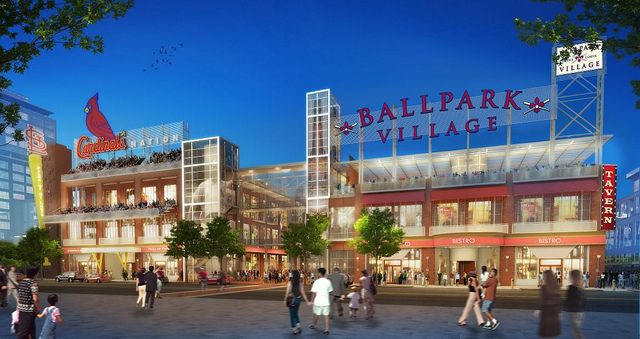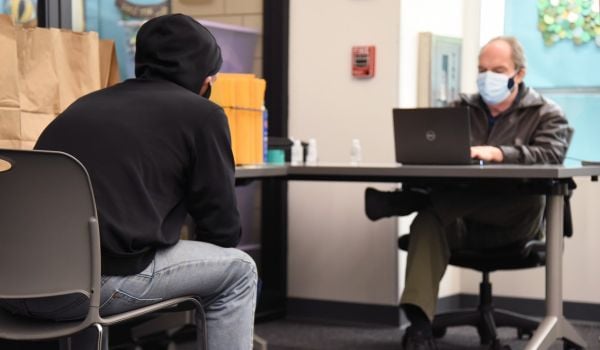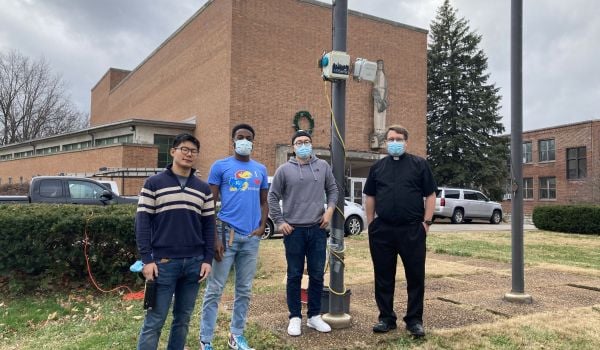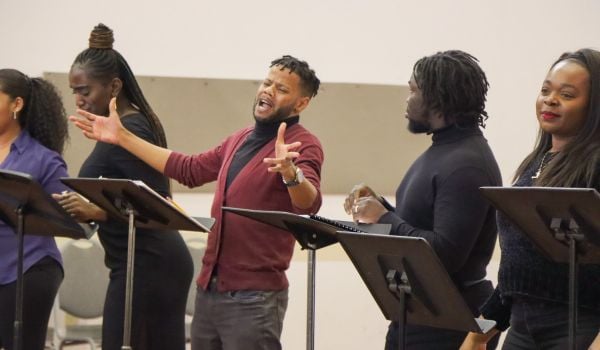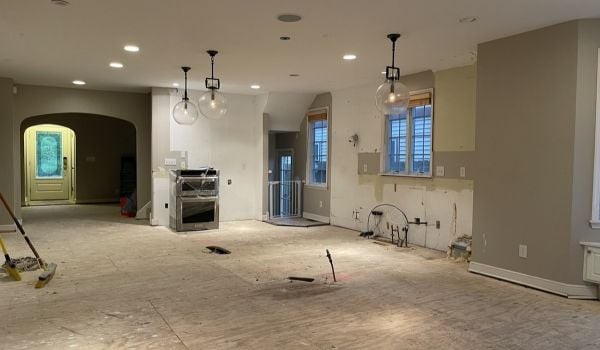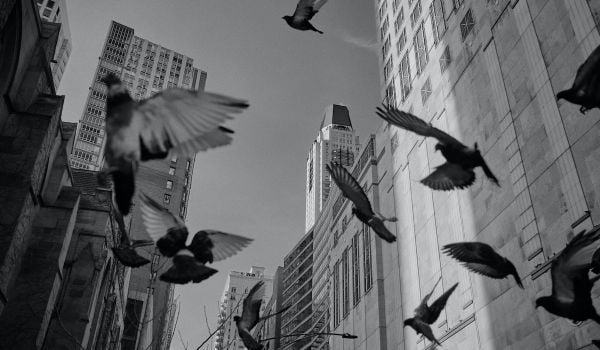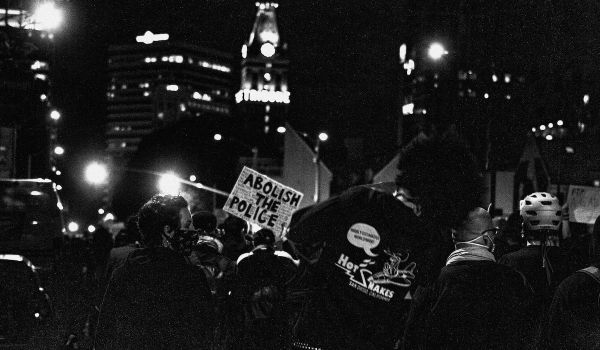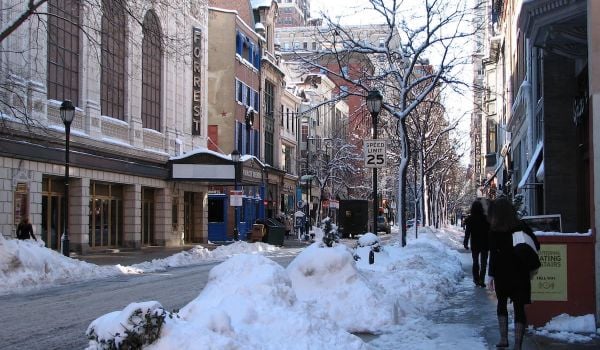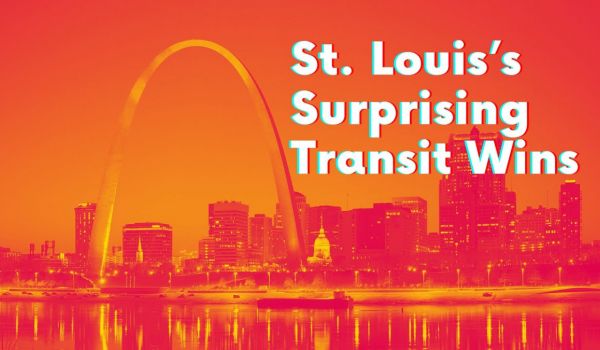The initial vision for Ballpark Village, a planned 10-acre redevelopment site that would have transformed downtown St. Louis, Mo., was hard to not like. The only missing detail was a dose of reality.
In 2006, it was fashionable to dream big. The $850 million Power and Light District was well underway in Kansas City, and how couldn’t St. Louis envy it’s smaller sibling across the state? And yet St. Louis had learned that backing bonds for retail development is risky business (see St. Louis Centre and Manchester Marketplace).
So the City of St. Louis declined to guarantee bonds that would have likely jumpstarted the project. Then potential investors Stifel Nicolaus and Centene both passed on Ballpark Village (BPV).
Two years ago, we were asking: “Who Cares if Ballpark Village is Built?” The newly revealed plan seems to validate the idea that this site missed its fleeting chance at significant development, the kind that would re-center downtown St. Louis. That previous article mentioned the coming redevelopment of the 21st interchange as a western terminus to the Gateway Mall and the new Mississippi River Bridge and Tucker Avenue reconfiguration as just two more attractive options.
For their part, the St. Louis Cardinals and developer The Cordish Companies continue to call BPV a “$700 million mixed-use retail, entertainment, office and residential district,” with what has been presented as a $100 million first phase. Beyond the obvious — that BPV has been downscaled again — the news has many positives. The near seven blocks was never going to be filled with 30-story towers. With the amount of surface parking and vacant land downtown, it’s much more important to fill the gaps in development than to build tall. A downtown with 2-3 story infill would be an incredible positive development.
In the latest revision, a 30,000-square-foot Cardinals Hall-of-Fame Museum will finally replace the long closed previous incarnation. A Cardinals-themed restaurant and seating deck with views into the stadium will break ground soon as well. The $100 million first phase of the project will include a total of 100,000 square feet of retail and entertainment along two blocks of Clark Street (blocks 200 and 300 in yellow on the site plan below).
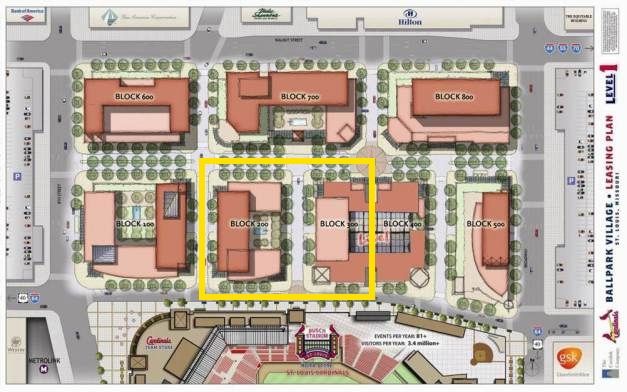
There’s more positive news in that the Cardinals and Cordish will finance the project and purchase all the $18 million in public bonds needed to construct phase one. But the best news is that the project includes all streets, parking and other infrastructure for the entire site, making future development faster and more attractive. This may be the type of site preparation that could have jump started past development.
Now the bad. Despite the project no longer being on the scale of Power and Light, Cordish and the Cardinals continue to pursue the Live! brand of private, quasi civic space. The space is reported by the St. Louis Post-Dispatch as being able to host 150 events per year in addition to Cardinals home game-days. Cardinals principal owner and managing partner Bill DeWitt, Jr. called it “a central living room for downtown.”
Never mind that one block north sits the vastly underused Gateway Mall — that space where a $40 million, privately funded sculpture park was recently built, and where tens of millions more may soon be spent on a revitalized Kiener Plaza, and where a renovated public library and a reopened opera house are supposed to help revitalize a new civic living room. Then you have the Arch grounds, Old Post Office Square, Washington Avenue, the MX development and several large corporate plazas. All of the above have been promoted as downtown’s “living room.“ Want to know a simple secret to a vibrant downtown? Focused development. One living room. See: Cincinnati, Ohio.
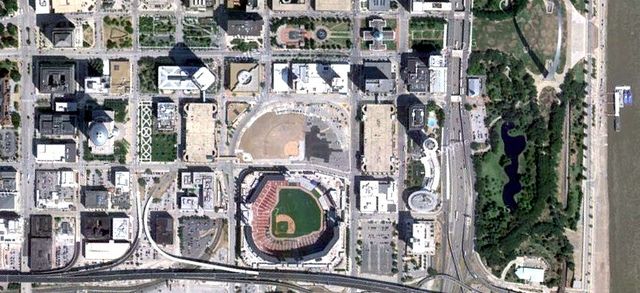
Aerial view of the Ballpark Village development site in St. Louis. Credit:
Ballpark Village isn’t central to downtown St. Louis. In fact, for the vast majority of downtown visitors to get there, they would have to pass the block-long Kiener parking garages, a block of mostly dead Gateway Mall and then the superblock of the Hilton hotel. East and west of Ballpark Village? The east and west ballpark parking garages, nearly two city blocks apiece. And you can’t get to the Arch via Clark Street. This is no one’s living room.
The Cardinal’s press release touts the organization’s financial commitment. It even states that the $411 million new Busch Stadium was “privately financed.” That’s not quite true, as the city relinquished a ticket tax that could amount to $350 million over 30 years and St. Louis County provided a $45 million long term loan. The largest piece of the project was financed with $200 million in bonds. The revised Ballpark Village project will receive public money in the form of Tax Increment Financing as developers will keep a portion of sales tax generated at the site. Additional subsidies in the form of $25 million in New Market Tax Credits could be awarded this year.
So in the end, St. Louis will see more restaurants and entertainment, another “living room,” but no residential, hotel or office development. It’s a start to a more than decade-old promise and good, vibrant, lasting development is rarely, if ever, completed seven blocks at a time. Let’s hope that this is the start of something slightly more organic than previous visions. Included in the announcement was a claim that an anchor tenant will be announced soon. Now where have we heard that before?
This is how a December 2010 Post-Dispatch story described the history of the Ballpark Village dream:
An aquarium, a 20-story residential tower, a massive underground parking garage built in the hole left by the old Busch Stadium. Nearly a half-million square feet of top-notch office space. Streets lined with stores and restaurants unique to the region. A development that could exceed $600 million, creating hundreds of new jobs and the jolt sorely needed to revitalize downtown.
A 24-hour place to live, work and play.
That was how Ballpark Village was pitched when introduced to the region 10 years ago this month. Cardinals owners talked that the demand for office and residential space next to a new downtown ballpark was so great that the complex covering 10 acres could be built as early as 2006 to coincide with the opening of the new ballpark. But that deadline and scope of work quickly moved to July 2009, when the team said a first phase of the village would be open when the Cardinals hosted the All-Star Game.

